Garden hibiscus - a beautiful and unpretentious shrub
Hibiscus (in Latin Hibiscus) belongs to the huge genus of evergreen shrubs. In nature (in open ground) it is found in tropical and subtropical latitudes. There are about 300 species. All types of hybrid hibiscus are frost-resistant, in our latitude it is grown as a greenhouse and indoor plant, although it feels great outdoors in summer.
Content :
- Hibiscus - detailed description
- Varieties and varieties of garden hibiscus
- Shrub propagation
- How to properly care for a plant
- Diseases and pests
- Beautiful and useful garden hibiscus
- Garden hibiscus as a decorative garden decoration
Hibiscus - detailed description
Hibiscus can be in the form of: shrub, semi-shrub, tree-like and herbaceous. Garden hibiscus species are most often grown as a standard tree plant with a height of 1.5 meters. Herbaceous varieties are annuals and perennials, flower growers are more attracted to the latter. The plant does not bloom immediately. After disembarking, you will have to wait about 4 years until it gives the first color. This is explained by the too slow growth of the bush.
Interesting to know! A feature of hibiscus is the flowering period. Every bud that has blossomed fades every other day. And literally a day later, the next one appears in its place.
Blooms throughout the summer, stops "throwing" flowers at the very beginning of autumn.
Features of the structure of the garden hibiscus:
- The height of the shrub is about 3 meters, the width is 1.5. But such parameters can only be achieved with proper care. In order to increase branching, it should be done correctly and on time. prune... The average age of life is 20 years.
- Root. Root system mixed - the core stem is overgrown with many processes. The root grows quickly, this should be borne in mind by growers who grow the plant indoors. They should be replanted frequently as the rhizome grows. Garden varieties do not need a transplant, they grow well in one place for a long time.
- Trunk. In tree varieties, the stem is always covered with bark. It can also be grown as a standard plant in flowerpots. Many growers combine, planting three plants of different color at the same time in one tub. Advice! If, as they grow, the trunks are intertwined with each other, then the result will be an amazing three-color tree.
- Leaves. The foliage of the hibiscus is bright green, large in size (about 5 cm), the leaf shape is different depending on the variety: oval, three-segment, jagged at the edges. For example, the Chinese hibiscus has glossy and even leaves, while the garden or Syrian hibiscus has matte, slightly lowered leaves.
- Flowers. The main decoration of hibiscus. They are: matte or simple, scarlet or pink, lemon or snow-white, purple and other shades. The diameter can be up to 13 cm.
- Fruit. In appearance, it is a five-leaf box with seeds inside.
Important! Double-colored hibiscus varieties are less frost-resistant.In areas with moderate climatic conditions, it is more advisable to grow a plant with simple flowers.
Varieties and varieties of garden hibiscus
The plant is presented for the most part as Syrian hibiscus, but there are other types:
- Syrian hibiscus. It may seem paradoxical, but the plant originates from China. Deciduous, evergreen plant with ovoid bright green leaves (up to 10 cm), single flowers (different colors). In nature, its height is up to six meters. In culture, there are several types with a double color, the form can be standard or artisanal. The most popular varieties of this species are Vayelit Ilar Double, Pink Giant, Diana, Carneus Plenus.
- Triplet hibiscus. The homeland of the plant is North Africa. The root system is pivotal, the stem is straight, densely branched, about 80 cm high, the leaves are petiolate, tripartite with pubescence. Yellowish color with a dark red core, bud diameter is about 4 cm. An individual feature of this variety is considered bloom: in the morning the bud opens for just a few hours, and closes closer to noon. Blooms for more than 4 weeks, each new bud is formed in the leaf axil. With proper care and optimal conditions, flowers will appear daily.
Hybrid hibiscus. In addition to the two previous varieties of the plant, some varieties of hybrids were bred by crossing. The best ones are:
- Youth - up to 1.5 meters in height, slightly branched, the stem is light yellow, the leaf also has a yellow-green shade of five or three incisions. Pink buds with a snow-white bottom about 10 cm in diameter, resemble Tulip.
- Late - a compact bush about a meter in height and about the same parameters in diameter, densely leafy. The leaf is oval-arrow-shaped, covered with light veins. The diameter of the bud is about 7 cm.The color is crimson-pink in the form of a narrow bell.
- Pink-porcelain - about 130 cm high, spreading. Leaves are lemon-green, deeply cut, on petioles. The color is in the form of a large bell, light pink with yellow color with a white bosom, the diameter of the bud is 12 cm.
Shrub propagation
The plant reproduces well without requiring special conditions. The main breeding methods:
- Petioles are prepared in summer from a young shoot with three growth points.
- The cut is treated with a growth catalyst (Kornevin), planted in a mixture consisting of peat with sand in equal proportions.
- Optimal temperature for keeping (+ 230C). The cutting takes root after 4 weeks.
- The young plant is transplanted into a fertile substrate (earth, humus and sand).
Important! Seed or cuttings are planted in the spring, when the soil has thawed, the environment is warm, and there is no chance of frost.
Sowing seeds:
- Before planting, the seed is soaked for a day in a growth stimulant solution.
- Everything is sown in the same substrate as in the first option (peat and sand in the same ratio) at a distance of 7 cm between each seed.
- The container is covered with cellophane wrap or glass.
- Water and air the sowing regularly.
- The temperature regime should be + 250C.
- Dive produced after the appearance of several leaves.
Important! The soil in which the seeds are planted needs bottom heating.
Division of the bush:
- The shrub is dug out completely.
- With a sharp knife, it is divided into parts.
- It should be planted according to the above rules.
How to properly care for a plant
Transplant garden hibiscus is not needed. But if, nevertheless, this need arises, then this is done in early spring using a similar technology (see the section on plant reproduction). Watering the shrub is often not recommended; it does not tolerate excessive moisture. This should be done only when the soil under it dries out. However, it is impossible to overdry the soil. Watering should be infrequent, but abundant.No special requirements for air humidity are required. Except when the bush is transferred to the room for the winter. These are, as a rule, standard bushes in tubs. Then they need to be sprayed periodically.
Hibiscus will generously thank you with flowering if you give it the right feeding.
The shrub loves fertile soil, so it needs to be fed every two weeks throughout the season. Fertilizer should contain phosphorus mixed with organic and a small amount of nitrogen. Potassium is added to the top dressing before wintering, this will make it easier to tolerate low temperatures.
Pruning is one of the most important and necessary procedures for a plant. Circumcision is carried out exclusively with sharp objects, blunt ones can injure the hibiscus. The lower edge of the cut is cut obliquely so that it is directed inward, the upper edge outward. It is not recommended to cut off 23% of the length of the shoots or branches, this can lead to the death of the plant. There are several types of circumcision:
- Spring. Stimulates flowering.
- Thinning (hygienic). Damaged and painful branches and branches are cut off. Signs: the green color of the cut is healthy tissue, if the color is white, then it is dead.
- Corrective. It is carried out in order to give the bush the correct, aesthetic shape.
- Radical. It is done when the bush is threatened with death. In this case, almost all shoots and branches are cut to living tissue.
- Autumn. Performed in September, when the plant stops blooming. This procedure cannot be performed later in the fall, otherwise in the spring the bush may not start growing.
Important! A young bush is given a sparing pruning type of pinching, cutting off only the upper parts so that it can branch out and give more flowers.
Problems with growing hibiscus:
- Set buds or buds have fallen off - excessive irrigation or lack feeding.
- The upper leaves turned yellow and the lower ones fell off - an excess of iron in the water that irrigates the plant.
- An abundance of green mass, while there is no flowering - an excess of nitrogen in the mixture for feeding.
- Leaves drooped - insufficient watering.
Diseases and pests
A disease that hibiscus often suffers from is chlorosis. It belongs to fungal types of diseases, it can be infected and uninfected. The first is carried by insects, therefore, it is necessary to fight with them initially.
Advice! The diseased shrub must be transplanted to another place, regularly sprayed, and intensified feeding.
Uninfected chlorosis develops with excess moisture, or if the plant is in a shaded place for a long time. In this case, it is transplanted to a lighter place, watering is adjusted.
Pests:
- Fungal insects - lay their eggs on it, eat the bush.
- Aphid - considered a carrier of infection, damaging the entire bush.
- Mealybug and spider mites - cover foliage with white or yellowish spots.
- Thrips and gall midges - they affect the flowers, as a result they fall off.
Pest control products are insecticidal preparations, they should be sprayed with a diseased bush. Advice! Soap solution fights well against fungal mosquitoes; it can be added to feed and sprayed around the hibiscus.
Beautiful and useful garden hibiscus
The plant has found its application not only as a culture, but also in medicine, cosmetology. It can even be used as a remedy for certain diseases. It contains: hibisic acid, pectin, anthocyanins, flavonoids and phytosterols. If there is a plant in the house, then a healing drink can be made from its flowers.
It is not recommended to drink the drink for pregnant women and small children!
To do this, you will need: 2 table ladles of chopped color, pour boiling water over it (400ml will be enough), let it brew a little and strain. This infusion (red) has the following properties:
- Diuretic
- Choleretic
- Antibacterial
- Anticonvulsant
- Laxative
- Antipyretic
- Strengthening blood vessels
- Regulating blood pressure
- Good for the liver
Garden hibiscus as a decorative garden decoration
The planting site of the bush, as well as its care, should be taken seriously. After all, a bush can live in one place, as mentioned above, for a long time. There are a lot of variations on how to beat a plant in a common flower garden. The main thing here is to get creative:
- Plant it in the middle of the bushes of roses identical colors
- Neighborhood hibiscus with lavender not only beautiful, but also useful for the plant (it drives away aphids).
- A separate bush in the heart lawn.
- There is a hibiscus alley on both sides of the path. And it looks amazing.
- Together several bushes of different colors
- With undersized conifers.
- How hedge.
It doesn't matter how and with whom to plant the shrub, it will look good everywhere, the main thing is that it has little wind and enough sunlight. In general, garden hibiscus is an unpretentious plant. If you apply and adhere to all the recommendations, it will thank you with chic colors and lush greenery.
More information can be found in the video:



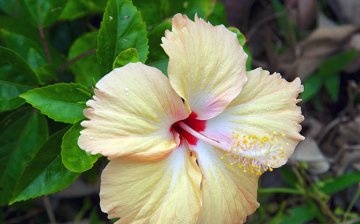

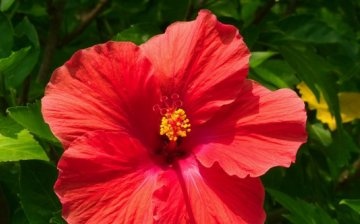
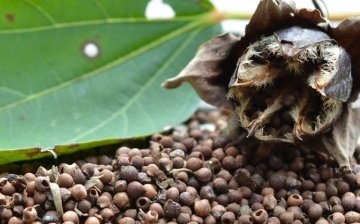
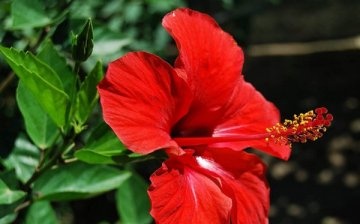
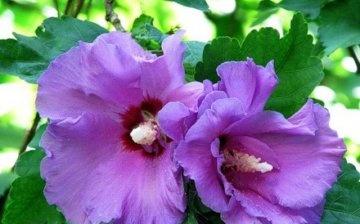
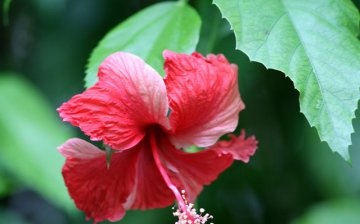










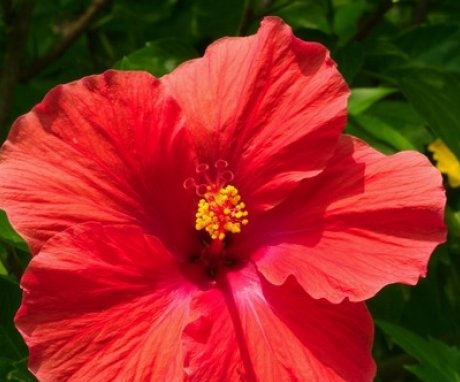
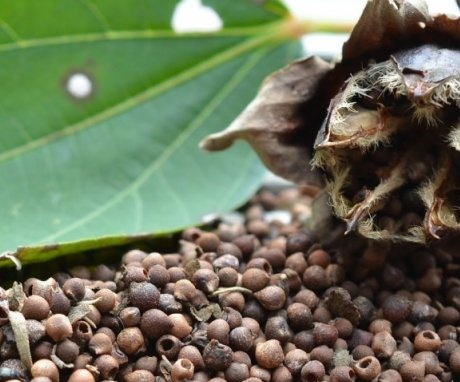
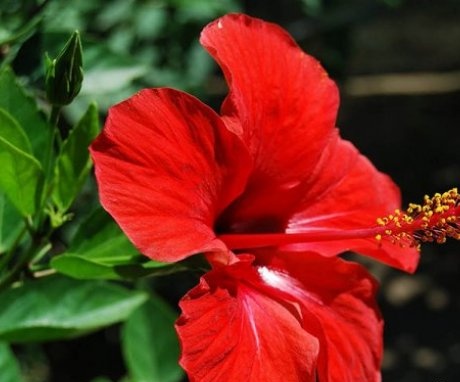
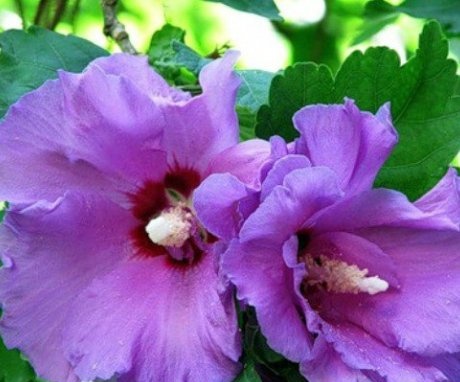

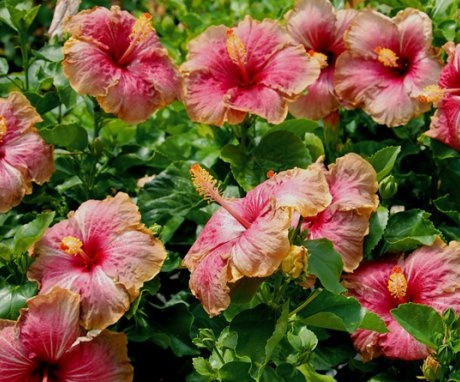
We tried to plant hibiscus in our garden. A very beautiful flower. But this year he disappeared from us. Rather froze in winter. Therefore, he needs very good care.